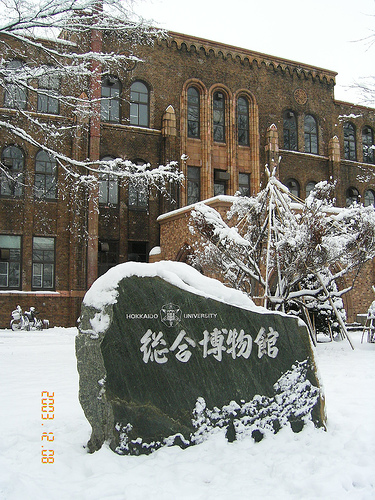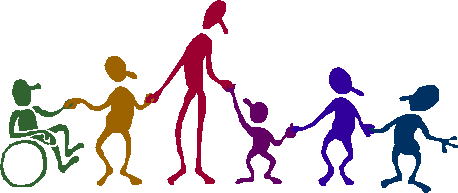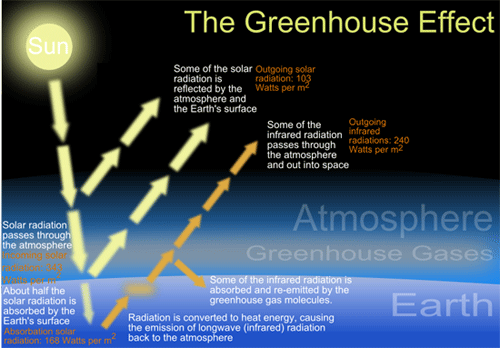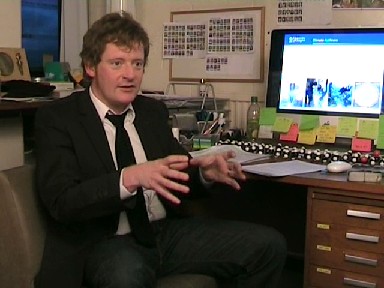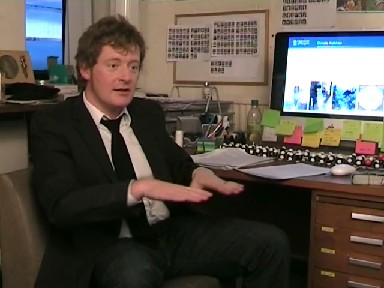James Bendle discussions and research
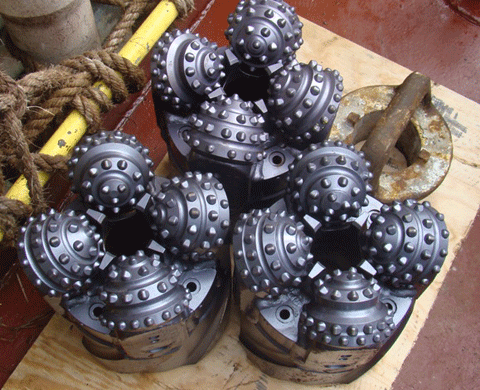
Introduction
The news story about James Bendle, palaeoclimatology and the drilling ship JOIDES Resolution suggests lots of interesting topics for discussion and research.
Take a look at those we've picked out from the text. Compare ours with those you found using the methods in Getting the topics.
In your groups discuss the differences. This isn't about right or wrong. Your choice is as good as ours, as long as you can explain and defend it.
Now have a go at some of these topics - yours or ours. We've picked out half a dozen and provided some extra information and guidance below, along with film clips of James Bendle talking about his work and himself in his office at Glasgow University - just before he left for the Southern Ocean.
Selected topics
James Bendle waved goodbye to his wife and sons and set sail for the Southern Ocean.
James and the other scientists on the JOIDES Resolution will be working 12-hour shifts without a day off for almost three months.
We know the atmosphere is going to warm further because of increasing levels of greenhouse gases.
We really don't know how sensitive the ice on Antarctica is to changes in temperature.
That's what we're going back in time, through these different layers of sediment, to look at.
Scientists go out to sea to drill that layer cake and bring material from deep inside it back to their labs.
We hope to present data within a year at scientific conferences, and to be publishing our first papers within two years
Want more?
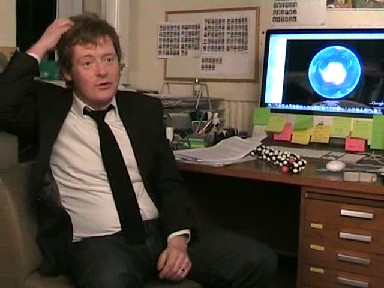
James Bendle waved goodbye to his wife and sons and set sail for the Southern Ocean.
Click on the picture to the left and have a listen to James talking about coming to live in Glasgow, and how he feels about heading off to the Southern Ocean, just after his second son is born.
While you're listening and/or reading, think about any questions you'd like to ask him.
If there are words you don't understand just mouse over them, as you did with the news story, and the meaning should pop up.
James spoke to us in his office at Glasgow University, just before he left on the expedition. He is now at sea on the JOIDES Resolution and is writing a blog. Have a look at this.
James is updating his blog often, so you can keep track of how he's getting on. His writing gives a great sense of what it would be like to be out there with him. Here are a couple of examples:
"So we turned back and sailed to the site through a flotilla of icebergs. Yesterday afternoon they came looming out of the mist in various forms, one to three miles wide, tabular slabs, wedges and domes."
"At some point the setting sun broke through and cast the waters in reds, purples and golds. It silhouetted the distant waves on the horizon, so that I could pick out the real monsters that occasionally piled up. The ocean looked like the surface of another planet..."

Tell and ask
Read some more of James's blog posts and pick out a small part of one of them - just a sentence or two - that you really like. In your groups discuss what it is you like about the parts each of you has chosen.
Now as a group discuss your selections, and get them down to just one that your group particularly likes. By commenting on his blog post, you're going to tell James about the sentences you've chosen and what it is you like about them.
Next we'd like you to go through the same process again, but this time with a question you want to ask James. This can be one that occurred to you as you were watching the video or as you were reading his blog.
First decide on one a question you have yourself, then in your groups discuss your questions and choose just one of them for the group. Put it to James.
When he replies, have a think about what he is saying. Discuss it in your groups, then give your feedback - just a few sentences - to the rest of the class - telling them how you feel and what you think about what James has told you.
Note on cooperative learning
Throughout Real Science when we talk about groups, we mean cooperative learning groups.
Cooperative learning is a vital part of the Real Science approach. Here's the point:
Cooperative learning is group work.
But group work is not necessarily cooperative learning.
In cooperative learning, small teams of students use a variety of activities to improve their understanding of a subject. Each member of a team is responsible for his or her own learning - and also for helping teammates to learn. Students work through an assignment until everyone understands and has made a contribution.
If your science teachers don't already use cooperative learning, please point them to some of the links below that tell them all about it. Try to persuade them to let you have a go. It's good fun. It helps your learning. And it makes you get on better with your classmates.
Cooperative learning links
TES Scotland articles
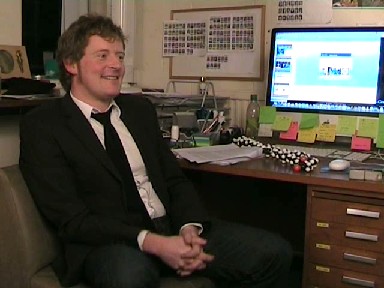 James and the other scientists on the JOIDES Resolution will be working 12-hour shifts without a day off for almost three months.
James and the other scientists on the JOIDES Resolution will be working 12-hour shifts without a day off for almost three months.
Sounds tough, doesn't it?
Twelve-hour shifts. No days off. No extra pay.
But in some ways it is easier and more satisfying for a scientist than being back at the University, James says.
Click on the image to the right to find out why.

Now write a sentence, in your own words, that explains why working on the ship is less pressurised than working at the University.
After a 12-hour shift - and sometimes they're even longer than that - there isn't much time for relaxing or socialising, James says. But he is taking his guitar witih him. Click on the image below to find out what kind of music he plays.
What is the name of the group James plays in? Why is it called that?
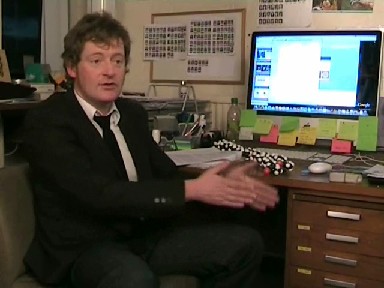
Why scientists?
One question that occurred to us, when we were talking to James was: Why do they need scientists on the ship while it's drilling the sediment?
The sediment cores are brought back, cut up, freeze-dried and sent out to scientists. Those on the ship get first shot at them. But after a year scientists all over the world, who haven't been on the expedition, can apply to get some of sediment to study.
Have a listen to James on the right. Now put together one paragraph, in your own words, that answers our question.
Finally, having listened to all three video clips, imagine yourself on the JOIDES Resolution and write a short account of one day.
Make it interesting.
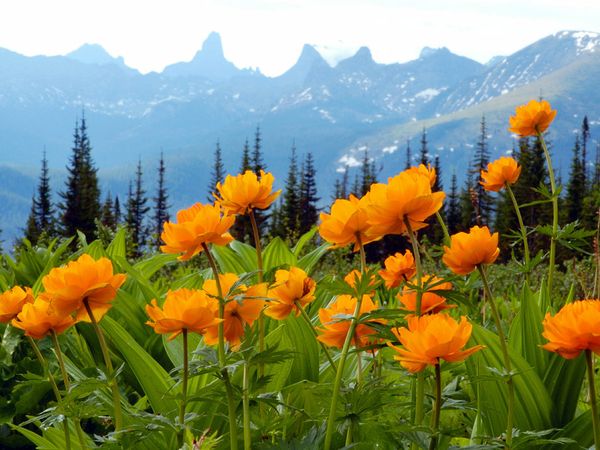 We know the atmosphere is going to warm further, because of increasing levels of greenhouse gases.
We know the atmosphere is going to warm further, because of increasing levels of greenhouse gases.
Climate change is a huge subject and, if you've seen the news recently, one you'll know creates a lot of discussion.
People get very hot under the collar about global warming - or climate change as it's now known since warming is just one of its effects. (Click on the image to the right to see more of them.)
In this and the next section, we're going to make a start on understanding the science. it's always a good idea to do a bit of thinking and find out some facts before getting into an argument.
Greenhouse gases
So what is a greenhouse gas? Before going any further please write a sentence that says what you think it is.
You'll come back when you've finished this section and have another go, so don't worry too much if you're not sure. But do write something.
Now you're going to find out about the greenhouse effect and greenhouse gases. A web search on greenhouse effect or greenhouse gas might be a good place to start.
Even better would be using the Real Science search page, which searches a set of sites we know are good for science and learning.
Or you can try both.
You should get a number of animations and videos, as well as text, to help you see what it's all about.
In your groups find a number of websites that you believe are useful.
Put together a 5-minute presentation, using these or anything else you fancy, entitled The greenhouse effect on me.
Keep it snappy and use plenty of illustrations. You can cover any other aspects you like, but we want you to include at least these three:
1) why is it called the greenhouse effect?
2) how does it work?
3) how is it changing?
Useful links
Climate change from New Scientist
Climate change from the Open University
Climate change from WWF
Learning and Teaching Scotland sustainable development education
Learning and teaching resources from SERC
We really don't know how sensitive the ice on Antarctica is to changes in temperature
So if the whole planet is going to warm in the years ahead, what effect will that have?
To find out something they don't know scientists usually set up an experiment. Then they use that experiment to put questions to nature and find out the answers.
But we can't do that with the whole Earth. As James says: "There is no Planet B to experiment with."
But as he also says, by pumping huge quantities of carbon dioxide into our atmosphere, we are actually doing an experiment with Planet A.
A very dangerous experiment.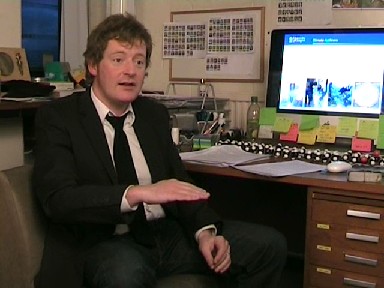
It's like the early surgeons practising on themselves. Or the pioneers of radioactivity learning what it does to the human body by experimenting on their own.
Good for the science perhaps but not so good for the scientists. A lot of them died.
Experimenting on the only planet we have is just as daft.
Click on the picture to the right to hear James explaining how he and his colleagues can use the Earth safely as a laborotary - by learning how the climate behaved in the past, and using that to find out how it might behave in the future.
Sea levels
Climate change will have lots of different effects on the world. To start this section's activities let's see what you know - or can guess - about these effects. In your groups use a straightforward cooperative learning technique called Roundtable to make a list of all the effects you can think of.
Do a web search and compare your own lists with those you get from that. Any surprises?
Now let's look at one of the most devastating effects of climate change around the world - rising sea-levels due to melting ice. Do a web search and find out first what the sea level is predicted to be by the year 2100. (You might want to use "IPCC" in your search.)
Take a look at some of the coastal lands around the world. Choose one that particularly interests you. Investigate:
a) what area of this land will be flooded if the sea-level rises by the predicted amount;
b) roughly how many people now live on this land;
c) where these people will go;
d) what's likely to happen next.
One but not all of your groups should choose Scotland.
Useful links
Sea level rise from Teachers' Domain
Mountain ice if it melts from Teachers' Domain
Ice stories from Polar Scientists
Photographic evidence for climate change
Aspen Global Change Institute virtual classroom
That's what we're going back in time, through these different layers of sediment, to look at
As he's travelling back in time, James Bendle is writing a blog, as we've seen already, and posting it on the JOIDES Resolution website.
So too are the other scientists on board. Take a look at their blog page, where you can learn what dozens of scientists have been doing, thinking and photographing, as they head for the drill site and get to work on their research.
There's a load of other fascinating stuff on the JOIDES site.
There's a section of weekly videos with an entertaining presenter, which also includes a 5-minute video on Why Ocean drilling and an animated explanation of how deep sea coring is done.
There's a section called Meet the JOIDES Resolution, with illustrated tours of the ship, an introduction to the people, information about its expeditions, a live Google map of its current location and a webcam coming soon.
There are teacher resources, including Teachers at sea (persuade your teacher to apply and he/she could join the scientists on the next expedition!).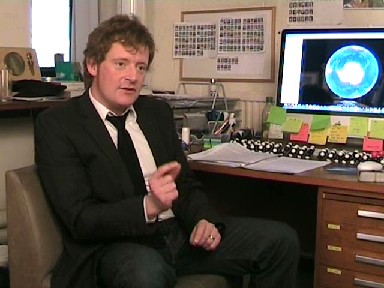
There's an educational games section, which you can have a play with. The creatures in the game are images of real fossils brought up from the ocean bed by a famous deep sea research and scientific drilling ship called the Glomar Challenger.
Activities
There's a downloadable poster on microfossils - which we're going to use for this section's main activities. That poster contains student guides to three investigations: 1) Small creatures, big science 2) Secrets of the sediments, 3) Nanofossils reveal seafloor spreading truth.
It also has actual photographs of smear slides - tiny pieces of the sediment cores brought up by drill ships spread into a layer on a glass slide. This is what the scientists actually study during - and for years after - the expedition.
Click on the image to the right and a listen to James talking about how the tiny fossils they find in sediment helps scientist learn about past climates.
The first activity on the poster - Small Creatures, Big Science” - is a nice introduction to the kind of problems the scientists face. In your groups have a go at it now. Point your teacher to the
Once you're finished, discuss the difficulties you found and the things that pleased or satisfied you, and give a short summary of these to the class.
Useful links
Deep Earth Academy activiities
Integrated Ocean Drilling Program drillship tour
Getting Into the Fossil Record
Activities, assignments and reading
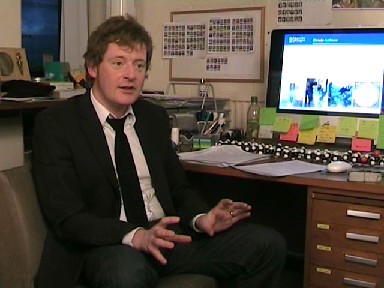
Scientists go out to sea to drill that layer cake and bring material from deep inside it back to their labs.
What kind of material? Well lots of kinds. But James specialises in studying something called molecular fossils.
In the last section he talked about fossils and microfossils. Well molecular fossils are a lot smaller even than the tiny creatures you learned about there. But every bit as useful for learning about past climate change.
Have a listen on the left to find out about about molecular fossils.
In your groups we'd like a simple poster please that illustrates fossils, microfossils and molecular fossils, and the use of one of these to find out about past climate.
You can use the video clips of James from this and the last section to get words and ideas. A web search using Google or the Real Science search page could also be useful to you.
Don't get bogged down with detail. Focus on the big picture. Most of what's on the web about molecular fossils is very detailed, because it's a fairly new area of research. So you might want to concentrate on what James says for that part.
Molecular fossils
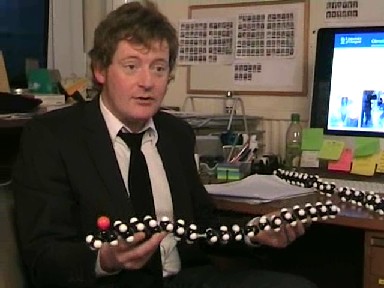 Have a listen to him on the right, talking about a particular type of molecular fossil, which he's done lots of research on - and is expecting to do more on, using the sediment cores from the JOIDES Resolution.
Have a listen to him on the right, talking about a particular type of molecular fossil, which he's done lots of research on - and is expecting to do more on, using the sediment cores from the JOIDES Resolution.
This is probably the hardest video clip you've watched yet. But there are some nice ideas we'd like you to get from it and include in your poster.
Talk about these in your groups, [need a coop activity here] then find images and illustrations for your posters. You should choose these to help get the ideas across to other people.
Before you get into it, there's a little piece of information you need, to help you understand what this is all about.
Olive oil or margarine
You've probably heard about saturated and unsaturated fats. There's always something about them in the newspapers.
But what does saturated or unsaturated mean?
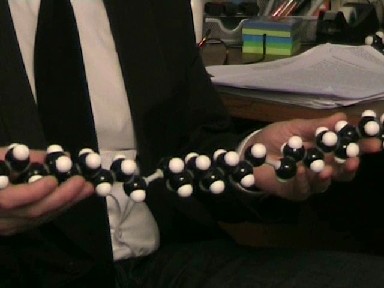 Well that thing James is holding is a model of an alkenone, a kind of fat. He tells us that the black balls are carbon atoms and the white ones are hydrogen atoms.
Well that thing James is holding is a model of an alkenone, a kind of fat. He tells us that the black balls are carbon atoms and the white ones are hydrogen atoms.
Now one reason all forms of life we know are built out of carbon atoms (along with others) is that a carbon atom can join with four other atoms. It doesn't have to, but it can. This makes them amazingly versatile in the types of compounds they can form.
When every carbon atoms is joined to four other atoms the compound is saturated - which in this case just means "combined with the greatest possible amount of other substances".
When some of the carbon atoms join to only three or even two other atoms it's unsaturated, and we get those double bonds he shows us in the video clip and you can see as little grey sticks in the model.
Activity
Now make a start on the activity please. Remember what it was?:
In your groups design and make a simple poster please that illustrates fossils, microfossils and molecular fossils, and the use of one of these to find out about past climate.
We hope to present data within a year at scientific conferences, and to be publishing our first papers within two years.
 It's not always easy to understand what scientists are talking about. James is easier than many, because he believes it's worth making the effort to talk to non-scientists, and has some experience of doing so.
It's not always easy to understand what scientists are talking about. James is easier than many, because he believes it's worth making the effort to talk to non-scientists, and has some experience of doing so.
But even James, when he starts on the details of his subject, can be hard to follow. He thinks about this stuff every day. So he knows all about alkenones, algae and sediments. We don't.
So how do we find out more? Well, scientists explain their research to other scientists by writing papers for scientific journals. So the best place to find out exactly what they're doing is in these papers.
But if you thought it was hard to follow James when he was talking about alkenones, it's a lot harder when he's writing about them for his scientific colleagues.
Horse's mouth
Here's an example from one of his papers: "However evidence of a significant regional event in the western Nordic Seas is recorded by reduced diatom assemblage-derived August SSTs on the North Icelandic Shelf in core MD99-2269..."
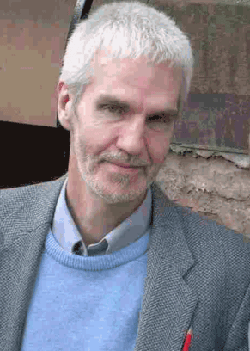 A bit hard to follow, isn't it?
A bit hard to follow, isn't it?
So is it hopeless? Do we have to rely on second-hand opinions and those scientists like James who are prepared to make the time to talk to us?
Making sense of science
It is possible to get lots of information from a scientific paper, even if you're not a scientist. We're going to take a first look at how using techniques from two different fields - language learning and journalism.
Journalists often write about things they know little about when they first took on the assignment. If they're writing for quality newspapers, like the Guardian, Independent and Times, what they write needs to make sense and be backed up by facts and understanding.
They often get sent huge technical reports, which can be just as hard to follow as scientific papers.
The secret is to learn the essentials of the subject fast, ask the right questions and relate what you read to what you know.
And never, ever read every word.
 Hitting the bullseye
Hitting the bullseye
The second source of valuable techniques in tackling new science is called directed activities related to text - DARTs for short.
The idea of these techniques is to make reading active and interactive.
This means it's more interesting for you and easier to understand, and a lot more of what you read sticks in your memory.
Deadlines and DARTs
So let's bring these ideas together.
Every statement in a piece of writing about science can be placed in one of ten categories. Here they are, with the letter used for each of them in brackets.
- reasons for doing the research (R)
- new finding or development (N)
- technology or methods used (T)
- existing knowledge (K)
- issues, implications or applications of the new research (A)
- hypothesis (H)
- evidence for a hypothesis (E)
- prediction (P)
- question still to be answered (Q)
- direction of future research (F)
How does this help us in tackling a piece of scientific writing we know nothing about?
Well it gives us the hooks we need to hang it on. It takes us a big step along the road to understanding what it's all about.
Activity
Let's have a go. In your groups try classifying the statements in this short New Scientist story about sediment cores.
Use coloured pencils, numbers, letters, notes in the margin or any other method that appeals to you.
Once you've done it, take a look at what we thought
This is not necessarily a better answer than yours. There are bound to be disagreements. Telling the difference between a new finding for instance and a hypothesis can hard even for the scientists doing the research.
But talking about a disagreement like that, and figuring out which kind of statement it is and why, is amazingly useful in understanding how science works
be hard to These should be seen as opportunities for discussion, not errors to be corrected.
Call again
If you keep coming back to Real Science, you'll learn lots more using these techniques to get to grips with science. There'll also be an interactive game coming soon.
In the meantime, for those of you feeling ambitions, have a go at classifying some of the statements or sections in one of James Bendle's papers into our ten categories of science statement: High-resolution alkenone sea surface temperature variability on the North Icelandic Shelf
Useful links
DARTs in TES Scotland
Directed activities related to text in primary school science
Seeing through texts: developing discourse-based materials in teacher education
How to read a scientific paper
Want more?
Stephan Pekar's blog
European Project for Ice Coring in Antarctica (EPICA)
For convenience here links to the video clips and transcripts used in all the above activities are provided below.
Climate models and the real world
We talked to James and filmed him for almost three hours before he left on the expedition.
Much of that filming has not been included in the activities suggested above. So links to the entire filmed interview, in the form of short, self-contained segments that have not been edited or transcribed, will be provided here soon.

